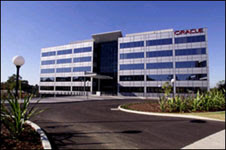On a recent trip to Malaysia, I asked two local people how to get to a landmark, and I got two different answers. I realised though that without a common reference (map), I had no idea where the goal was, how I was going to get there, and whether the routes that were suggested were sound. Needless to say, I eventually got to my destination, much to delight of my taxi driver who financially benefited from the scenic journey!
Watching the palm trees fly past my taxi window I came to think about the state of architectures in organisations. We have all got to some state of working architecture. Architectures have grown organically or by acquisition as businesses have become successful. During the 1990’s COTS (Commercial off the Shelf) applications dominated the software architectural landscape with the promise of delivering pre-built industry processes. While the success of COTS applications delivering business value cannot be negated, as business requirements evolve, COTS applications have been customised, extended, and application bolt-ons and integration work have been inextricably bound to the actual application. All these tightly coupled “modifications” could become a major contributor towards the cost of an application upgrade, so much so it could even prohibit an organisation enjoying the benefits of a new version of their COTS application.
So how can we reduce the cost of ownership around COTS on the one hand, and at the same time improve the level of flexibility offered to the business?
Lets look at the cost of ownership challenge, particularly with regards upgrades. Today, many COTS applications such as Oracle E-Business Suite, JD Edwards, PeopleSoft and Siebel are service enabled. By using a services approach, application customisations, extensions and integrations can be built in a decoupled (loosely-coupled) manner. In other words service orientation can directly address the issues of customisations and extensions that are traditionally tightly bound to the application database schema and integrations that are point-to-point and heavily scripted, thereby facilitating smoother and cheaper application upgrades. Helio reduced their application integration effort by 50% through utilising reusable services.
What about flexibility? Using the same services approach, services from your COTS applications can be consumed and reused in numerous ways to form new composite applications or form part of flexible, enterprise-wide business processes. By decoupling the reliance of a business process to the underlying applications, the impact of application upgrades would be reduced, the speed of development work would be improved and flexibility will be introduced at the business process tier. ABN Amro and Dallas Fort Worth Airport are examples of organisations that benefited from adopting a process-centric approach to their business.
If you are wondering how you can go about maximising the value of your COTS investment, check out the Best Practice sites I found below…
E-Business Suite
PeopleSoft
JD Edwards
Siebel
The Oracle Australia and New Zealand Middleware and Technology Blog.
Subscribe to:
Post Comments (Atom)


No comments:
Post a Comment